Key Points
- Alaska is a snake-free state, though there are reported cases of snake remains being found.
- Snakes and other reptiles are ectotherms, so they rely on the sun’s heat to warm their bodies. In Alaska there are parts of the year with few daylight hours of sunshine, making it difficult for snakes to survive.
- Occasional snake sightings are attributed to relic snake populations, southern snakes that have migrated north of their territory, and pet snakes that have escaped or been set loose.
- The only snake that might be able to make it in Alaska is the common garter snake (Thamnophis sirtalis)
Just about everyone in the world can picture a snake; they’re long, legless, and cold-blooded. Many people fear them, though the vast majority of snakes are actually harmless to humans. They’ve been around for a very long time, around 200 million years to be exact.
Today, there are about 4,000 species of snake living all over the world. But, there are a few places where, for one reason or another, snakes don’t live. These include the Hawaiian Islands, the islands of New Zealand, Ireland, Iceland, and Greenland.
But, what about the northernmost state in the United States, Alaska? Are there snakes in Alaska? We’re here to answer that question and explore a little more about just why there may or may not be snakes in the Yukon.
We’ll also take a look at one famous Alaskan case involving an escaped pet python. Then, we’ll go over all the places you can, and can’t, find snakes.
Are There Snakes in Alaska?

Alaska is home to many species of animals, including moose, grizzly bears, wolves,
reindeer
, beaver, and deer.
©evenfh/Shutterstock.com
Are there snakes in Alaska? The simple answer to whether or not there are snakes in Alaska is: no. Unlike other, more southern, states, Alaska has no confirmed, resident population of any species of snake. However, there have been various reports over past decades of snakes, or snake remains, found throughout the state.
In general terms, Alaska is a snake-free state. However, there have been cases of pet snakes escaping, or people releasing snakes into the wild. There have also been several instances of snakes commonly found in the Pacific Northwest and British Columbia showing up in southeastern Alaska.
Let’s take a closer look at each possibility for snakes in Alaska.
What Animals Live in Alaska?
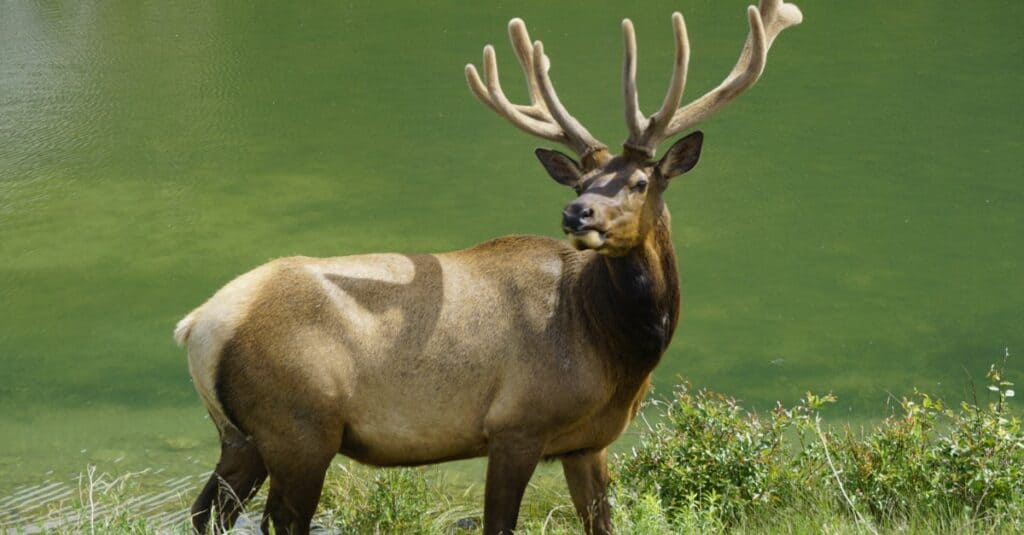
Caribou
can be found in Alaska
©CSDigitalMedia/Shutterstock.com
Alaska is full of wildlife and the animals of the state are diverse. Many people travel from all over to see bears, moose, all sheep, wolves, and even caribou. Some of the oceanic animals include humpback whales, orcas, and gray whales.
Additionally, the brown bear is the top predator that calls Alaska home. In fact, the brown bear population varies depending on food sources, and in some places, there is at least one brown bear found per square mile of wilderness.
Why Does Alaska Have No Snakes?

Alaska lacks reptiles because it’s too cold.
©fivespots/Shutterstock.com
Reptiles don’t thrive in Alaska for several reasons. First, it’s too cold, and second, for large parts of the year, there is no daylight. Snakes and other reptiles are ectotherms and rely on the sun’s heat to warm their bodies. So, without sun or warm weather, you don’t have reptiles.
Those living in Alaska experience both temperature and daylight hours with an extreme variation. During the peak of summer, temperatures in some areas of Alaska can reach 90 degrees Fahrenheit. However, it’s Alaskan winters that would be truly intolerable for creatures unable to internally regulate their own body temperature, like reptiles. -40 degree Fahrenheit temperatures are common and, in some regions of the largest state in the US, wind chills can fall to -65 degrees.
Alaska is actually famous for its complete lack of reptiles; they don’t even have lizards. The closest thing to a native reptile that any Alaskan might see is a sea turtle. However, Alaska is home to several amphibians, including the wood frog. Wood frogs fit well into the cold Alaskan climate because they can actually withstand their bodies freezing solid, and still ‘come back’ to life.
Snake Sightings In Alaska
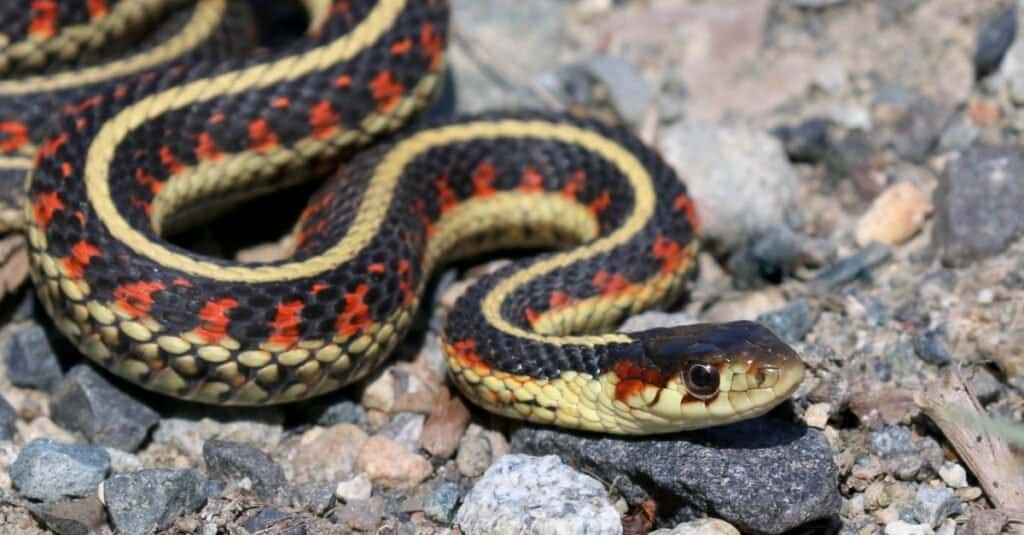
With its frigid weather and sunlight-free winters, Alaska is one of the most inhospitable places on earth for snakes.
©iStock.com/randimal
There has never been a verifiable population of snakes in Alaska, yet, people still find small snakes on occasion, particularly in the southeastern part of the state. Scientists believe that these rare sightings can be explained either as relic populations, southern snakes expanding their range, or simply as pet snakes that have escaped or been let go.
Most of the snake sightings in Alaska can be attributed to the common garter snake. Other cases involve small, deceased, snakes that may have been garter snakes, though decomposition made positive identifications impossible. Perhaps the most famous snake story to come from Alaska is that of Sam, the 17-foot escaped python, in 2017.
Sam: The 17 Foot Alaskan Python

Alaska may not have native snakes, but native snakes, like the
rattlesnake
, copperhead, and cottonmouth, abound in the lower 48.
©asawinimages/Shutterstock.com
In the early summer of 2017, a 17-foot-long, 100-pound Burmese python named Sam was reported missing by his owner. The snake stayed out for two whole weeks, doing what? Well, no one knows. The owner believes that Sam did indeed venture outside, though how far he might have gone, no one knows.
According to his owner, Sam had recently eaten a large rabbit, so he likely wasn’t out searching for food. After two weeks, Sam returned home, much to his owner’s shock and delight. However, his jaunt around the neighborhood potentially makes Sam the biggest snake to ever slither over the Alaskan ground.
What Other Countries or States Have No Snakes?

The islands of Greenland, Iceland, Ireland, New Zealand, and Hawaii are famously snake free.
©Kim Ries Jensen/Shutterstock.com
Snakes may live all over the world, but they don’t live on every continent. They’re entirely absent from places like Antarctica, Greenland, and Iceland. But, you may be surprised to learn that a couple of warmer places, like Hawaii and New Zealand, are also snake-free. In both cases, snakes never found their way to the isolated islands, and they never evolved independently on Hawaiian or New Zealand soil.
Ireland is also a snake-free island, despite the fact that England is home to four species of snake. The reason for this is that, like Hawaii and New Zealand, Ireland is isolated from the rest of the world. Since snakes never evolved there, and they’ve never made their way over from England, there are no snakes in Ireland. Plus, the weather’s just a tad too cold for snakes.
There are a scattering of some other small islands that are also snake-free, including Cape Verde off the northwest coast of Africa; the Pacific island nations of Kiribati, Tuvalu, Nauru, and the Marshall Islands.
Are There Snakes In Canada?
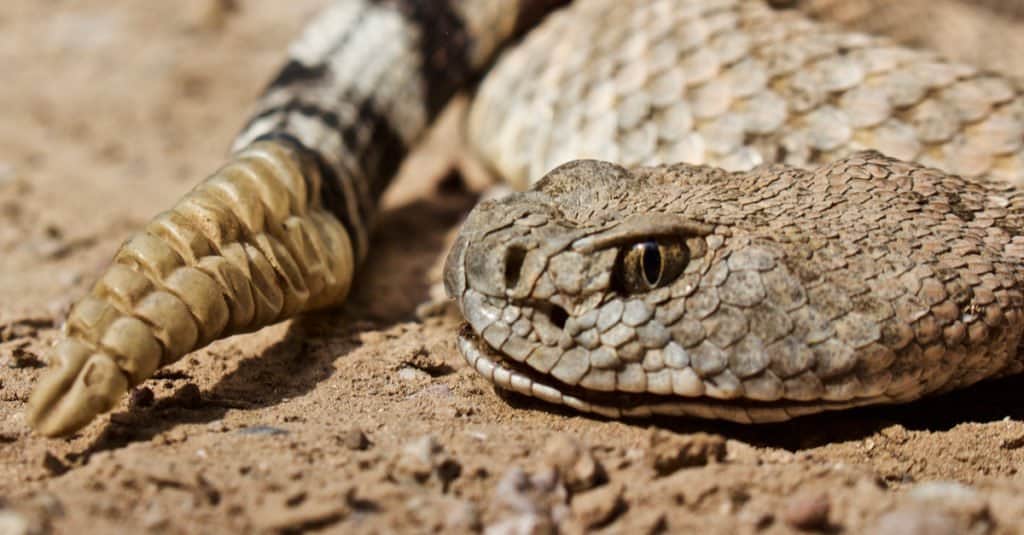
There may not be many snakes in Alaska, but southern Canada is home to at least 25 species of snake.
©DMartin09/Shutterstock.com
Alaska may be a little too cold and a little too far north for snakes, but southern Canada isn’t. Canada is home to over 25 species of snake, some of which are venomous. These include the prairie rattlesnake in Alberta and Saskatchewan, the western rattlesnake in British Columbia, and the massasauga in Ontario, among others.
What Other Dangerous Animals Are There In Alaska?
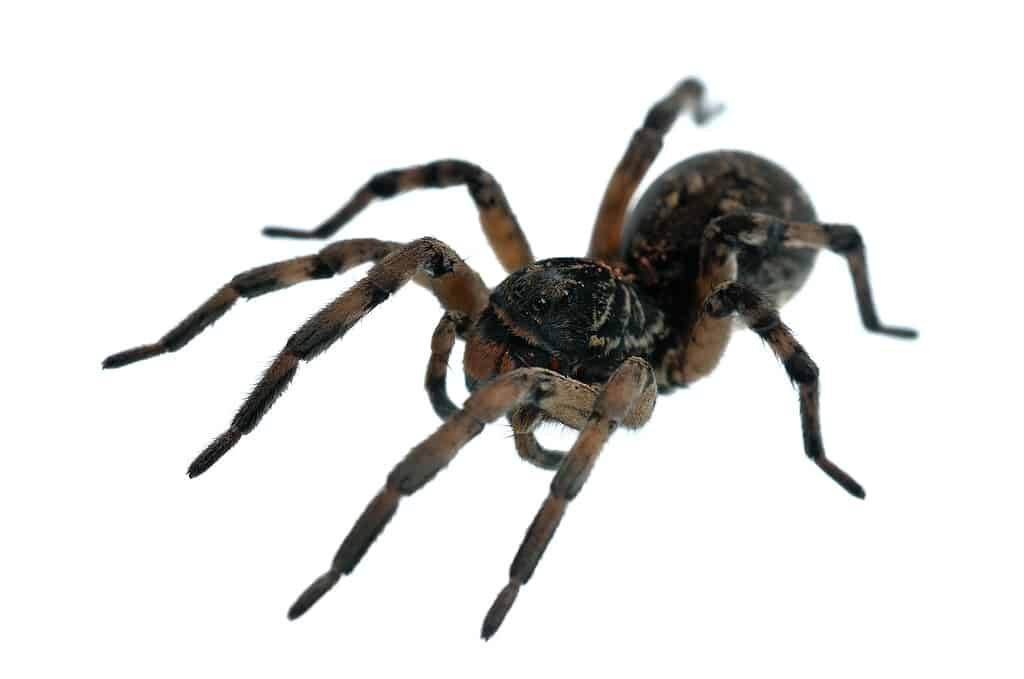
Wolf spiders are especially plentiful in Alaska and are known to deliver venomous bites
©D. Kucharski K. Kucharska/Shutterstock.com
The Wolf Spider: This arachnid can be found in abundance in Alaska. A large arthropod, it is capable of growing up to 4 inches. Known for its excellent eyesight and its ability to sprint after its prey, it is also capable of delivering a rather painful bite. And it’s venomous too, and will also cause itching and swelling in addition to pain. Obtaining medical assistance for little children, the elderly, or the immunocompromised is especially advisable in the event of such an encounter with the spider.
Fortunately, there are no black widows or brown recluses in Alaska. And only five other species can be found in Alaska.
Other Dangerous Non-Venomous Animals in Alaska Include:
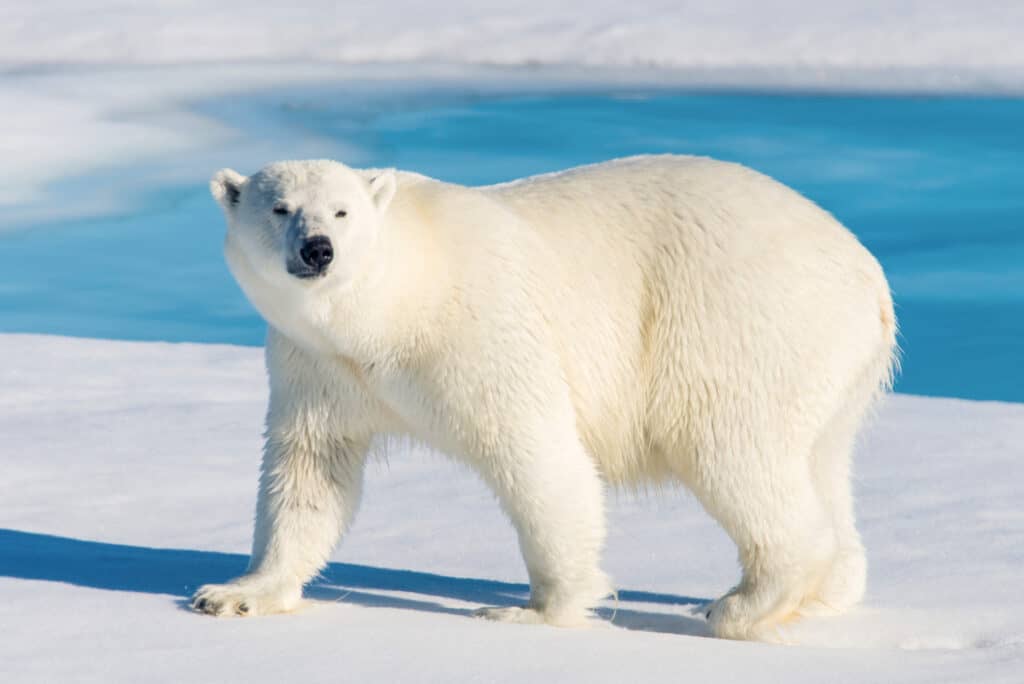
Immensely powerful polar bears are dangerous to humans and are capable of moving with a speed that belies their size
©iStock.com/Alexey_Seafarer
Polar bears: Hypercarnivorous, they are capable of measuring between 7 – 10 feet in height and of tipping the scales at 1,000 lbs. However, some male polar bears are capable of reaching 1,500 lbs and one particular individual reached over 2,000 lbs.
They are especially fast and can reach 25 mph. Possessed of immense strength they are known to attack humans and special care should be taken when in polar bear territory.
Grizzly bears: Second only in size to polar bears, these giant bruins are capable of reaching 800 lbs. They are even faster than their polar bear relatives and can outsprint a human with a top speed between 35-40 mph. These lumbering omnivores of the Alaskan variety actually account for 29% of bear attacks in the United States.
Their cousins Kodiak bears which live on the island of the same name are even bigger and are capable of weighing 1,500 lbs.
Other dangerous animals in Alaska include black bears, bison, and moose.
Summary of States, Countries, or Continents That are Snake-Free
Here’s a recap of the places in the world where you will not find snake populations:
| Rank | Places That are Snake-Free |
|---|---|
| 1 | Alaska |
| 2 | Antarctica |
| 3 | Cape Verde |
| 4 | Greenland |
| 5 | Hawaii |
| 6 | Iceland |
| 7 | Ireland |
| 8 | Island of Kiribati |
| 9 | Marshall Islands |
| 10 | Island of Nauru |
| 11 | New Zealand |
| 12 | Island of Tuvalu |
Other Reptiles in Alaska
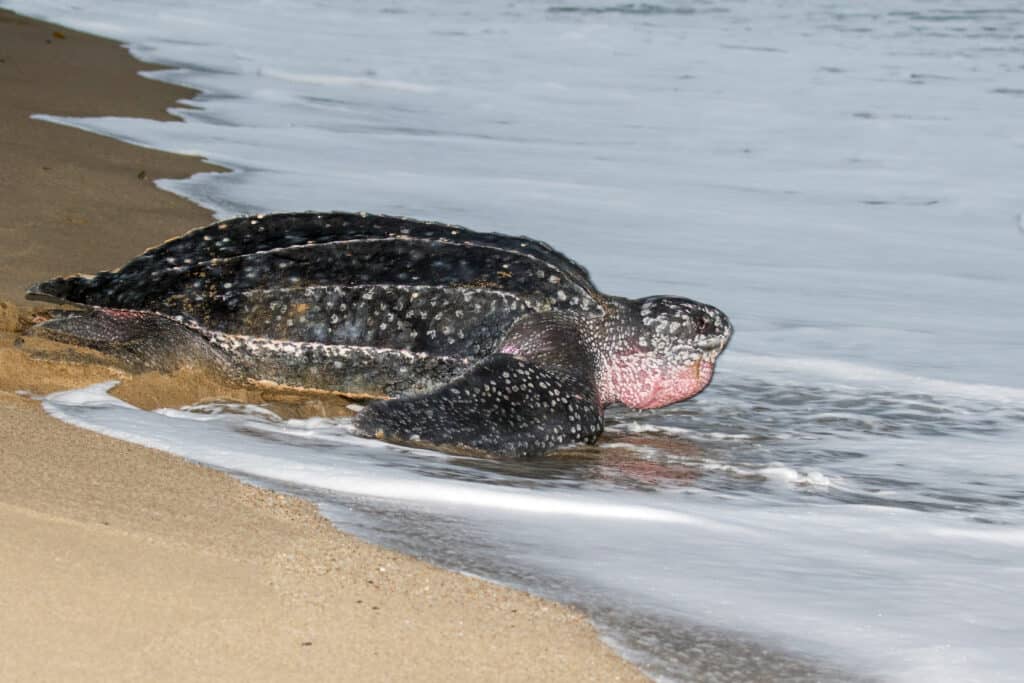
Leatherback turtles can be spotted in Alaska.
©iStock.com/AGAMI stock
Alaska is home to a variety of reptiles, including four species of sea turtles. The Green Sea Turtle (Chelonia mydas) is the most common turtle seen in Alaska, as well as one of the largest turtles in the world. Leatherback Sea Turtles (Dermochelys coriacea) are also occasionally spotted in deeper waters off the coast or near islands. Loggerhead Sea Turtles (Caretta caretta) and Olive Ridley Sea Turtles (Lepidochelys olivacea) have been rarely spotted but can be found along coastal areas during their mating season from May to August.
Alaska is home to many species of amphibians and reptiles, including the Columbia Spotted Frog and the Wood Frog. Both frogs thrive in the Alaskan climate, living near ponds or streams with plenty of vegetation for cover. The Roughskin Newt is another reptile found in Alaska. They inhabit forests and wetlands throughout much of the state. Roughskin Newts have a unique adaptation that helps them survive during cold winters: they produce glycerol, an antifreeze-like compound that prevents their cells from freezing solid. This allows them to hibernate through even severe winter weather without any ill effects!
In addition to the reptiles already mentioned, you may be able to spot a Long-toed salamander or a northwestern salamander in Alaska. The Long-Toed Salamander is usually found near small bodies of water and can grow up to 3 inches long. Its color varies from dark brownish gray to yellow spots on its back and sides. The Northwestern Salamander is also known as the Coast Range Red-backed Salamander, and it’s typically found in moist forests where it spends most of its time underground or under logs and rocks. This species can reach up to 2 inches long with orange or reddish stripes along its back that contrast against its light gray body.
You might even see a Western toad if you’re lucky! Western Toads are common throughout much of western North America, including Alaska, and they have an average size ranging between two and four inches long with distinctive warts on their skin that help them blend into their environment better.
The photo featured at the top of this post is ©
Discover the "Monster" Snake 5X Bigger than an Anaconda
Every day A-Z Animals sends out some of the most incredible facts in the world from our free newsletter. Want to discover the 10 most beautiful snakes in the world, a "snake island" where you're never more than 3 feet from danger, or a "monster" snake 5X larger than an anaconda? Then sign up right now and you'll start receiving our daily newsletter absolutely free.
Thank you for reading! Have some feedback for us? Contact the AZ Animals editorial team.







